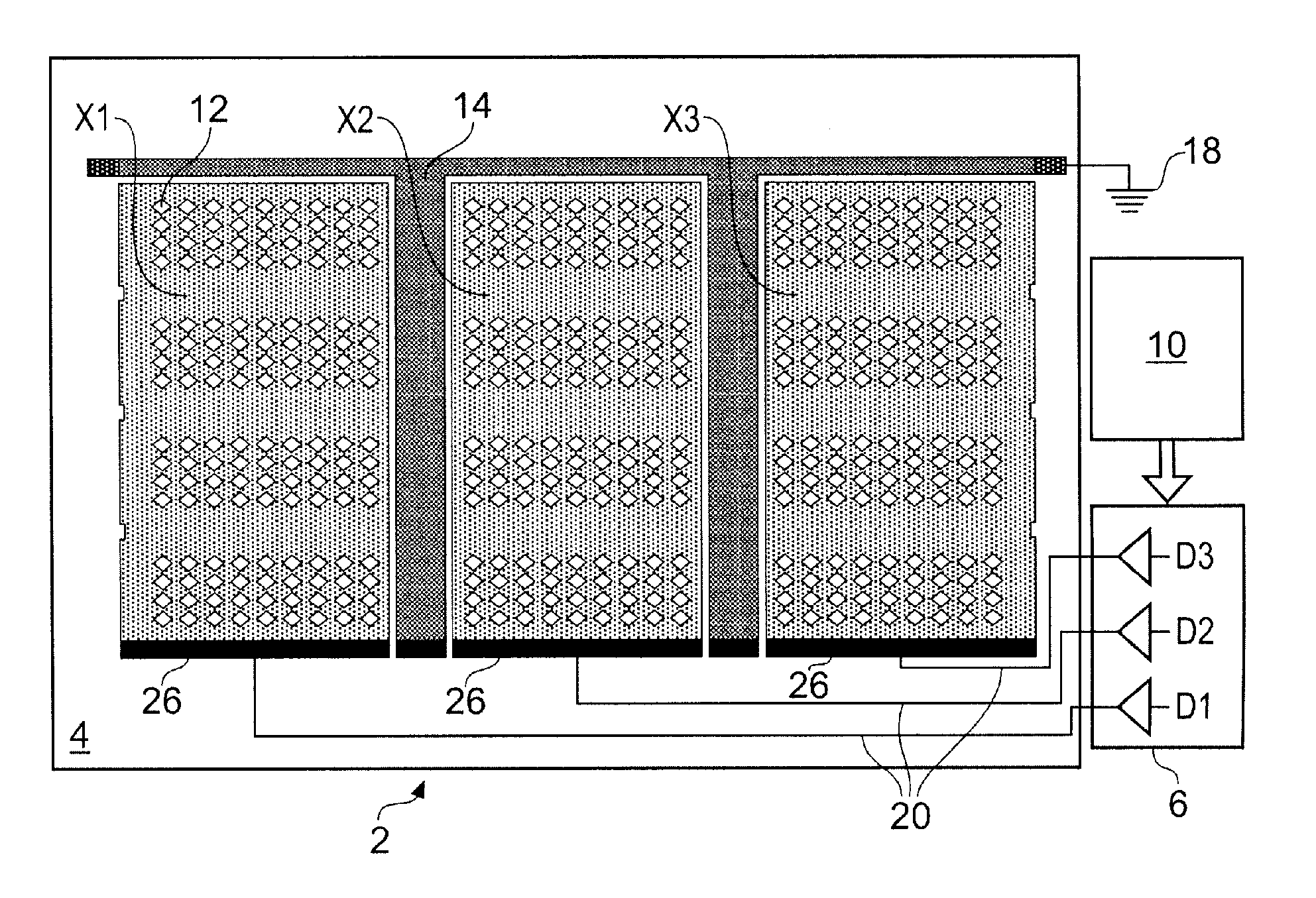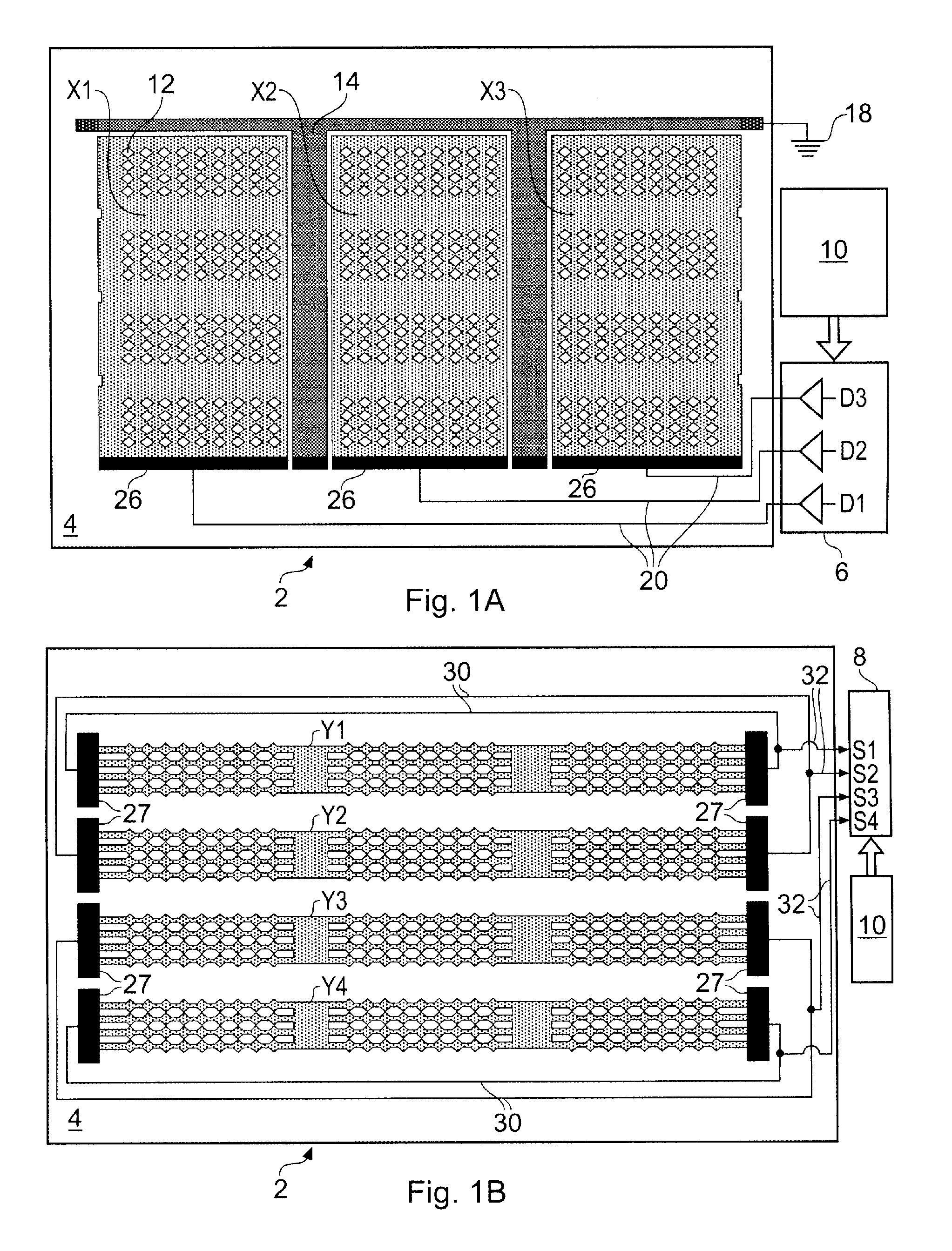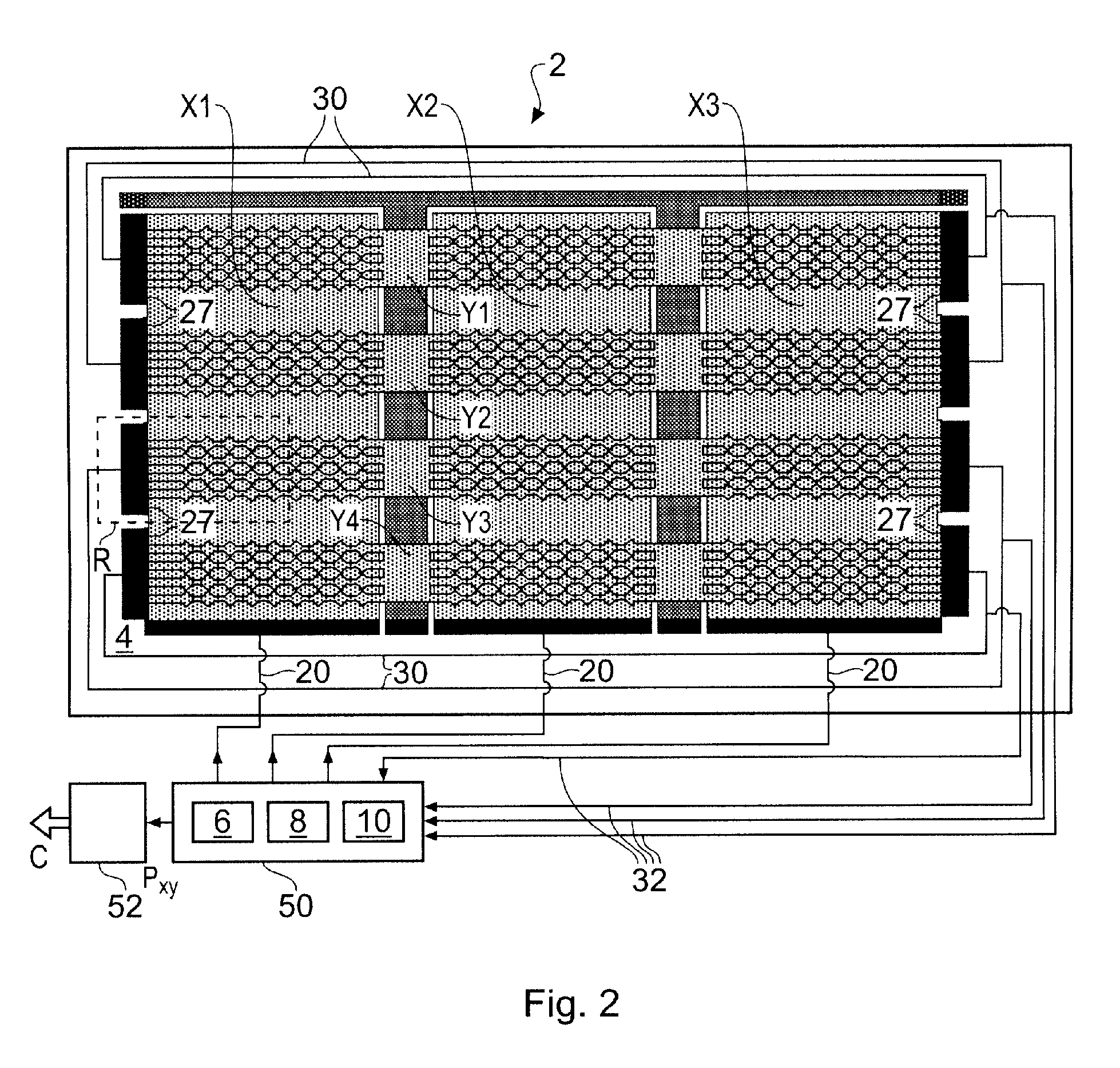Touch sensitive screen
a touch sensitive, capacitive technology, applied in the field of capacitive touch sensors, can solve the problems of high resistance, erroneous output, and sensitive sensors that are susceptible to walk-by interference, and achieve the effect of maintaining optical transparency
- Summary
- Abstract
- Description
- Claims
- Application Information
AI Technical Summary
Benefits of technology
Problems solved by technology
Method used
Image
Examples
Embodiment Construction
[0038]FIGS. 1A and 1B schematically show respective front and rear plan views of a two dimensional capacitive position sensor 2 according to an embodiment of the invention. The terms front and rear are used for convenience to refer to opposing sides of the sensor 2 and are not intended to refer to any particular spatial orientation. The term front is used to identify the side of a sensor which typically faces an object to be sensed when the sensor is in normal use. It will be appreciated however that in many cases the sensor is reversible.
[0039]The sensor 2 comprises a substrate 4 having a patterning of electrodes deposited on both sides which together define a sensitive area of the sensor. The patterning of the electrodes on the substrate can be achieved using conventional techniques. The substrate 4 is of a transparent plastics material, in this case Polyethylene Terephthalate (PET). The electrodes are of a transparent conductive material, in this case ITO. Thus the sensitive area...
PUM
 Login to View More
Login to View More Abstract
Description
Claims
Application Information
 Login to View More
Login to View More - R&D
- Intellectual Property
- Life Sciences
- Materials
- Tech Scout
- Unparalleled Data Quality
- Higher Quality Content
- 60% Fewer Hallucinations
Browse by: Latest US Patents, China's latest patents, Technical Efficacy Thesaurus, Application Domain, Technology Topic, Popular Technical Reports.
© 2025 PatSnap. All rights reserved.Legal|Privacy policy|Modern Slavery Act Transparency Statement|Sitemap|About US| Contact US: help@patsnap.com



